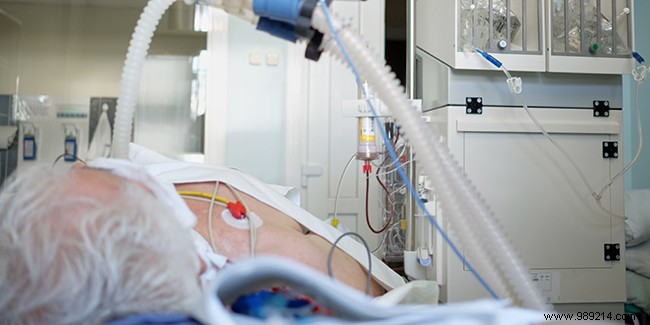
New rights in favor of the sick and people at the end of life were set out in a law of February 2016. The law affirms that "everyone has the right to a dignified end of life accompanied by the best possible alleviation of suffering" . In particular, it authorizes, in certain well-defined cases, the use of deep and continuous sedation until death
First of all, we must emphasize an important and often overlooked point. Sedation is not a therapeutic act that leads to the death of the patient. It should not be confused with euthanasia, which is prohibited in France , nor consider it as a response to a request for euthanasia. Its objective is to relieve the patient of suffering experienced as unbearable at a time when death is inevitable and imminent due to the progress of the disease.
Concretely, continuous sedation consists of regularly injecting the patient at the end of life intravenously with a set of drugs (most often midazolam, a sedative hypnotic, and analgesics) which will help to lower their level of consciousness until death, a state that also helps to relieve him of any pain he feels. The dosage of the drugs that make up the sedation is adapted to the patient's condition. Sedation is said to be deep when the awakening of the patient is made impossible. It is associated with the cessation of all medical procedures, such as hydration or artificial nutrition, which make it possible to keep the patient alive. Only treatments that contribute to maintaining comfort, such as those related to the mouth, the prevention of bedsores, etc., are maintained until death. The medical team responsible for the sedation of a patient must rely on a competent palliative care team, some of whose members must be available 24 hours a day.
The so-called "deep and continuous" sedation accompanies the patient until his death in the most dignified conditions possible. Its objective is "to reduce or eliminate the perception of a situation experienced as unbearable by the patient", as indicated by the High Authority for Health (HAS). Given the rights of people at the end of life recognized by law, the medical profession is required to implement all analgesic and sedative treatments to ensure the patient a dignified and peaceful end of life, even if these treatments will have result in shortening life. Sedation can be performed in health establishments, in accommodation establishments for dependent elderly people (Ehpad) or in the home of the sick person.
Deep and continuous sedation maintained until death, called SPCMD, is a procedure regulated by law. To apply it, doctors rely in particular on the recommendations of the HAS and the French Society for Support and Palliative Care (SFAP). The decision to use sedation is taken by the medical profession in a collegial manner, the motivations and reasons for which are recorded in the medical file of the patient, who is informed or his relatives.
Deep and continuous sedation is implemented in well-defined cases:
A minor can ask to benefit from sedation, but it will be implemented after agreement of the holders of parental authority. If their condition allows it, a protected adult has the same rights as any other end-of-life patient.